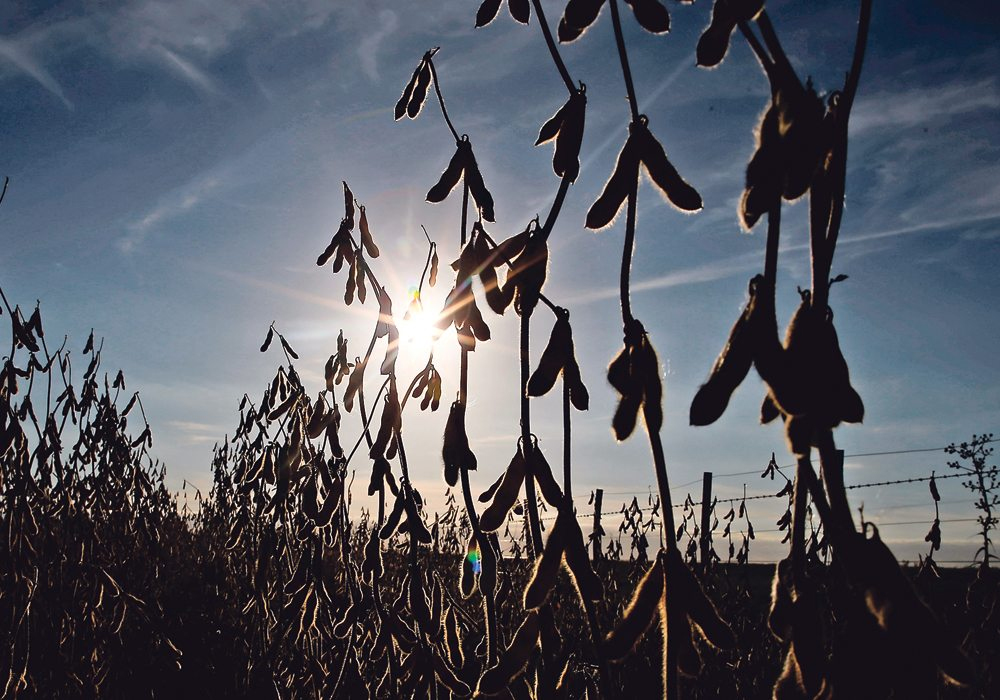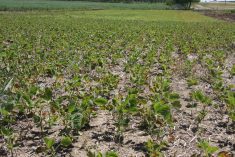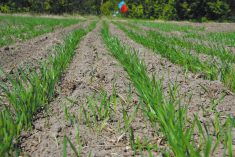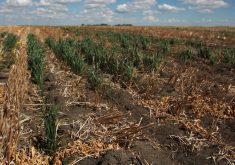South America’s crop will move into the critical season in January and if current weather trends hold steady Brazil’s production hopes might be met, but Argentina’s farmers will likely be disappointed.
Overall, the continent will likely produce more soybeans than it did in 2021-22, which was a disastrous year, but will fail to reach the monster crop predicted in autumn.
Argentina’s woes were one factor in the rally that soybeans and canola futures enjoyed over the holiday week.
Forecasted rain over the Christmas weekend turned out underwhelming and missed large areas of the parched region. Soy farmers in the driest areas have been holding back on seeding and the national planted acreage on Dec. 28 was, at 72 percent, nine percentage points behind the pace last year.
Read Also

China’s grain imports have slumped big-time
China purchased just over 20 million tonnes of wheat, corn, barley and sorghum last year, that is well below the 60 million tonnes purchased in 2021-22.
The ideal planting window is closing and expectations are that the total seeded area will wind up less than forecast and also the late-seeded crops will develop with fewer hours of sunlight.
As I wrote this on Dec. 29, the forecast showed showers for some agricultural areas Jan. 1 but the extended outlook into Jan. 11 showed no hope for drought-breaking rain for Argentina.
In its December world supply and demand report, the U.S. Department of Agriculture still had Argentina’s soy crop forecast at 49.5 million tonnes, up from 43.9 million last year. It appears the market is already factoring in a number that is smaller than that.
The USDA forecast Argentina’s corn crop at 55 million tonnes, up from 51.5 million last year.
I expect Argentina will fail to meet those goals, but how far short it falls will depend on weather in the rest of January.
These developments were supporting oilseed prices last week, but there was no sense of panic because of better production prospects in the big player on the continent, Brazil.
The USDA in December forecasted 152 million tonnes of soybeans for Brazil, up 25 million tonnes from last year’s drought-ravaged 127 million.
The state that suffered the most last year, Rio Grande do Sul, in the south bordering Argentina, is again experiencing drought.
It produces 14 percent of Brazil’s soybean crop, on average.
Large parts of the central and northern growing zones are in better shape, but not perfect.
Mato Grosso, which on average produces 28 percent of the soybean crop, enjoyed good rain in December, bringing its crop condition up to the average level.
Parana, which accounts for 19 percent of the crop, had difficulties at seeding and in November but it too had good rain in December.
Michael Cordonnier, a respected South American crop analyst at Soybean and Corn Advisor www.soybeansandcorn.com, in late December said crops had recently improved in some places and deteriorated in others, leaving him with the decision to maintain his soy production forecast at 151 million tonnes.
The weather forecast into the second week of January shows northern growing zones getting more rain, but southern areas continuing to get below normal rainfall.
The perk-up in oilseed futures in the Christmas-New Year’s holiday period was also supported by demand factors associated with China’s decision to end its “zero-COVID” pandemic restrictions.
The restrictions, which were the longest lasting and most strict in the world, were impeding the country’s economy. The leadership in Beijing finally decided to drop them, even though infections were rising seasonally.
No one is sure how things will develop.
Initially markets rose on the idea that dropping COVID rules would allow China’s economy to improve, meaning that it would buy more of everything, including oilseeds.
But in following days optimism faded.
There is the possibility that without controls COVID in China will burn through the population. China’s citizens are now free to travel, raising additional worries that this might be a vector for new COVID strains to spread around the world.
There is lots of uncertainty how this will play out in the early months of the new year, adding to other big questions that include the direction of global inflation and central bank policy on interest rates.
Some measures show inflation might have peaked, but we don’t know if it will decline, and if so, how quickly.
The U.S. Federal Reserve in December reacted by raising its key interest rate by a half a percentage point instead of the 0.75 percent increase seen in the last two raises.
The Bank of Canada also raised its key rate by 0.5 percent in December.
The Fed said it expected another increase or two in coming months, raising the benchmark rate to five to 5.25 percent by the end of 2023 from 4.5 percent today.
It appears that most observers expect no economic growth in Canada and the U.S. in the first half of the new year or perhaps a mild recession.















